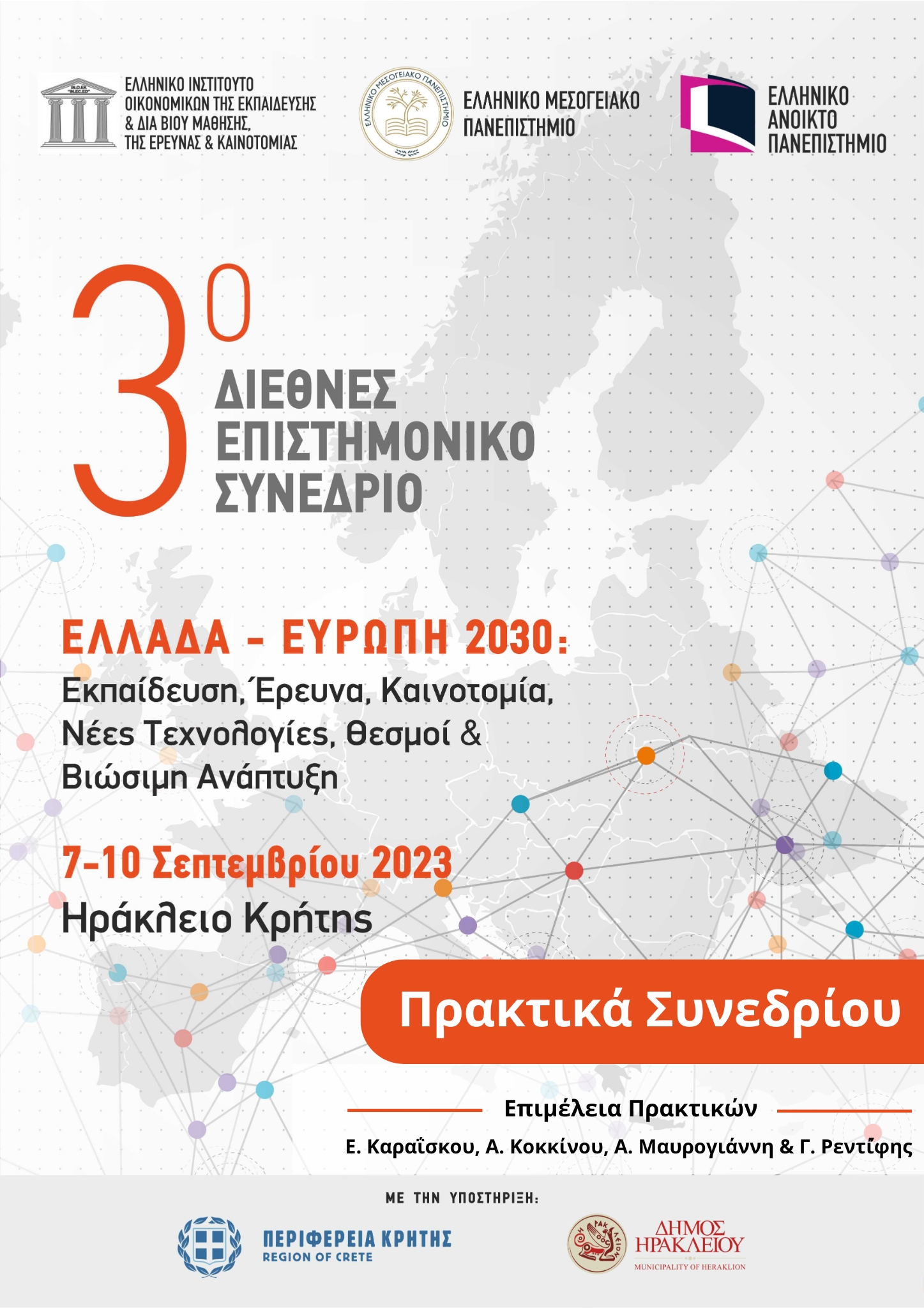Metaverse biomes with Design Thinking for TESOL and exponential language acquisition

Περίληψη
Η παρούσα εργασία αξιολογεί την αποτελεσματικότητα της χρήσης βιοσυνόλων στο μετασύμπαν για τη διευκόλυνση της Διδασκαλίας Αγγλικών, κι ευαισθητοποιεί για την ανάδειξή τους στην τάξη που αποδέχεται τη νέα εποχή. Επισημαίνει τη διαδικασία με την οποία μπορεί να εμπλουτίσει την εμπειρία εκμάθησης της γλώσσας για επιταχυνόμενη κατάκτηση και χαμηλό συγκινησιακό φίλτρο (Κράσεν) σε μια προσέγγιση Σχεδιαστικής Σκέψης τεσσάρων βημάτων που εξελίσσονται γύρω από την παρατήρηση, συμπόνια, δημιουργικότητα και κριτική σκέψη. Παρόλη την περιορισμένη βιβλιογραφία στην Εμβυθιστική Σχεδιαστική Σκέψη, μέσω της μελέτης περίπτωσης πάνω στη χρήση του μετασύμπαντος σε σύγχρονα διαδικτυακά προγράμματα διδασκαλίας Ενηλίκων και με δημοσκοπήσεις τμημάτων, η εργασία αποκαλύπτει τα ωφέλη της διδασκαλίας μέσω γλωσσικής εμβύθισης. Εμβαπτίζοντας του μαθητές σε προσομοιώσεις, machinima, Τέχνη Τεχνητής Νοημοσύνης και διάδραση που χτίζονται σε Εικονική Πραγματικότητα και Εικονικούς Κόσμους, ο διδάσκων περνά σε εξεύρεση λύσεων μέσα από βήματα Σχεδιαστικής Σκέψης με ανθρωποκεντρική δραστηριότητα. Τα συμπεράσματα χρησιμεύουν σε σχεδιαστές προγραμμάτων και σε διδάσκοντες, διεπιστημονικά.
Λέξεις κλειδιά: Μετασύμπαν, Σχεδιαστική Σκέψη, Εμβύθιση, VR/VWs/A.I., TESOL.
Λεπτομέρειες άρθρου
- Ενότητα
- Εισηγήσεις

Αυτή η εργασία είναι αδειοδοτημένη υπό το CC Αναφορά Δημιουργού 4.0.
Οι συγγραφείς των άρθρων που δημοσιεύονται στα πρακτικά του συνεδρίου για την «Εκπαίδευση, Δια Βίου Μάθηση, Έρευνα και Τεχνολογική Ανάπτυξη, Καινοτομία και Οικονομία»διατηρούν τα δικαιώματα πνευματικής ιδιοκτησίας επί των άρθρων τους. Άρθρα που δημοσιεύονται στα πρακτικά διατίθενται με άδεια Creative Commons 4.0 και σύμφωνα με την άδεια μπορούν να χρησιμοποιούνται ελεύθερα, με αναφορά στο/στη συγγραφέα και στην πρώτη δημοσίευση για μη κερδοσκοπικούς σκοπούς και με δικαίωμα τροποποίησης μόνον με παρόμοια διανομή (αν αναμείξετε, τροποποιήσετε, ή δημιουργήσετε πάνω στο υλικό, πρέπει να διανείμετε τις δικές σας συνεισφορές υπό την ίδια άδεια όπως και το πρωτότυπο)

